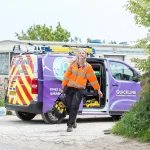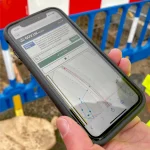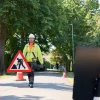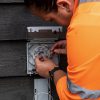BT Trials Quantum Radios to Boost Future UK 5G Mobile Cover

Telecoms giant BT (EE) has begun to trial a new “hyper-sensitive quantum antenna technology using excited atomic states,” which represents a new way of detecting radio waves that could find much weaker signals than conventional receivers and thus boost the capabilities of future 5G mobile (broadband) and IoT networks.
In this setup, researchers at BT Labs in Martlesham are using an Atomic Radio Frequency (RF) receiver to harness a quantum effect called Electromagnetically Induced Transparency (EIT) to form a highly sensitive electric field detector.
The trial is said to represent the first time a digitally-encoded message has been received on the 5G friendly 3.6GHz (radio spectrum band) carrier frequency. Previously, simple audio has been received using much higher frequencies, but this trial is the first industrial demonstration using digital modulation within one of EE’s main commercial 5G frequency ranges.
Advertisement
In theory, BT claims that a receiver like this could be over 100x more sensitive than traditional receivers (i.e. achieving better network coverage and thus data speeds) and it would also reduce mobile network energy consumption. All of this would naturally also benefit other technologies, such as low power Internet of Things (IoT) devices and sensors.
The operator added that the atomic RF Receiver can also be positioned in a passive optical receiver in hard-to-reach locations, potentially bringing mobile networks closer to achieving 100% coverage and helping to close the digital connectivity divide.
Howard Watson, CTO of BT, said:
“BT’s investment in cutting edge R&D plays a central role in ensuring the UK remains a network technology leader. Our programme has huge potential to boost the performance of our next generation EE network and deliver an even better service to our customers. Although it’s early days for the technology, we’re proud to be playing an instrumental role in developing cutting edge science.”
At present this technology is still only in the “very early stages” of development and BT will first need to miniaturise the equipment, while also finding the optimum RF modulation and signal processing, before being able to turn it into a commercial product that can be deployed. But once achieved, this could result in an RF receiver with greater sensitivity than conventional radio antennas, tuneable operation from very low frequencies, detection of analogue and digital modulation, and low energy consumption through reduced need for electronics. Costs savings may also flow from such a development.
Hopefully in the future, BT will be able to develop this to such a point that they can conduct a wider field test and show comparison results between the new technology and existing solutions. But we suspect that it might take a few years to reach the commercialisation stage, assuming they can overcome the various R&D challenges involved in getting to that point.
Advertisement
Mark is a professional technology writer, IT consultant and computer engineer from Dorset (England), he also founded ISPreview in 1999 and enjoys analysing the latest telecoms and broadband developments. Find me on X (Twitter), Mastodon, Facebook, BlueSky, Threads.net and Linkedin.
« Ofcom 2022 Study Rates Mobile and Broadband ISPs by Quality UPDATE3






















































Why not just skip to the big boy and use quantum entangled bits for all our data?
That way whenever Steam releases a new game, we’ll all instantly have it.
Something tells me you aren’t guapo at all.
my mum says I am.
Oh great, another source of covid!
Actually it’s been proven by experts that there is NO link between 5G and Covid especially as Covid had spread in countries where there is no 5G there.
There is no evidence of a link between 5G and coronavirus. These theories have been rejected by scientific experts in the World Health Organisation and Full Fact, a UK-based independent fact checking charity.
https://www.gov.uk/guidance/5g-and-coronavirus-covid-19
I rather believe the experts then some wild conspiracy theorist with no evidence to support their obscene claims.
If this technology means that in the future that 5G technology can be rolled out to improve connectivity and use less energy for doing so then we should be appreciating those who are making it possible.
I think someone’s struggling with satire
Seems exciting. Let’s do it!
Hmm…
100 times more sensitive = 100 times more “noise” to filter out?
I’d assume that whilst there’s a correlation between sensitivity and noise it would be based on a power.
Graphs of this kind of thing are normally exponentials.
“hyper-sensitive quantum antenna technology using excited atomic states”… Doctor who-esque technobabble.
If you search for Electromagnetically Induced Transparency you can find a much more coherent explanation.
EIT appears to offer a method to select a very narrow frequency band and so suppress out-of-band noise.
OK, I mean it sounds exciting – but….
I’m unsure of the benefit? Everything is about receive, but what about transmit?
I’m just not getting how this will help mobile coverage, because signals need to be received AND transmitted. If the receiver is a million times more sensitive than traditional receivers, that’s fine – but it just means it will “hear” a lot of signals from significantly outside the area that the tower can transmit to?
Surely the only benefit for super sensitive receiving, is in one way systems, like DCF/MSF, DAB and Freeview?